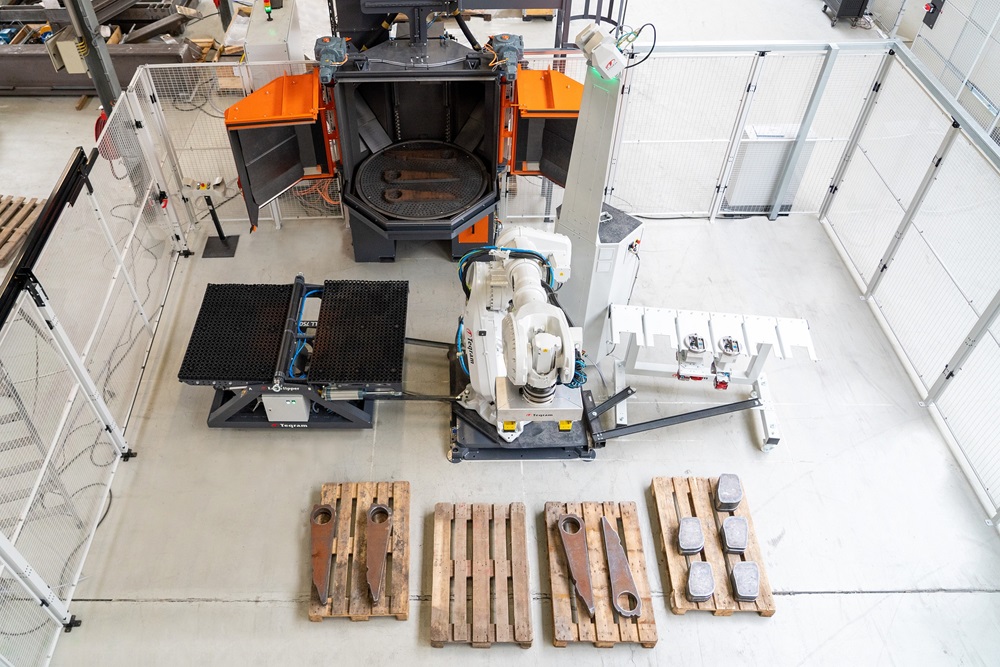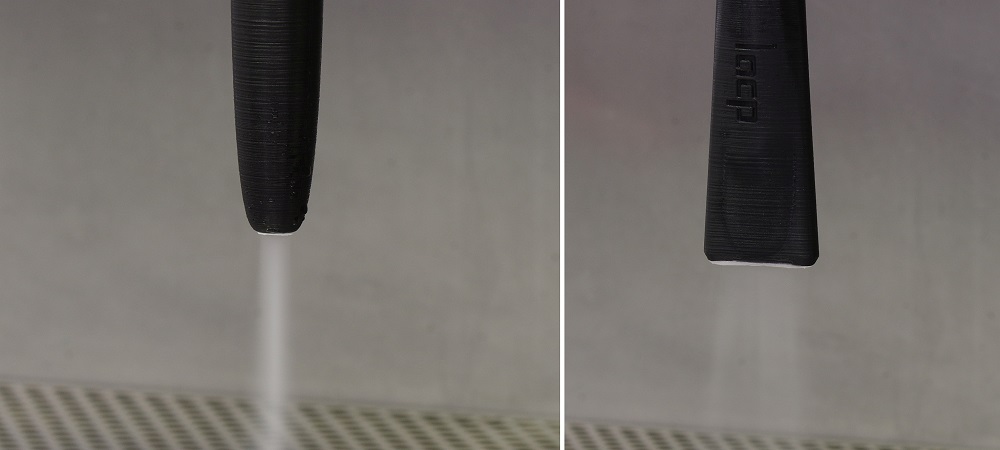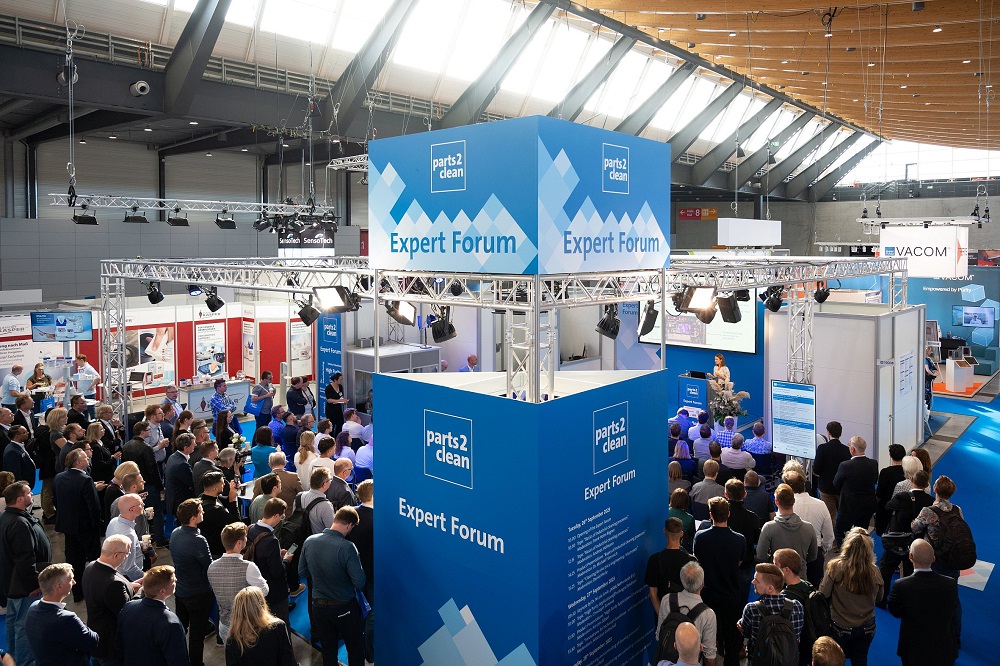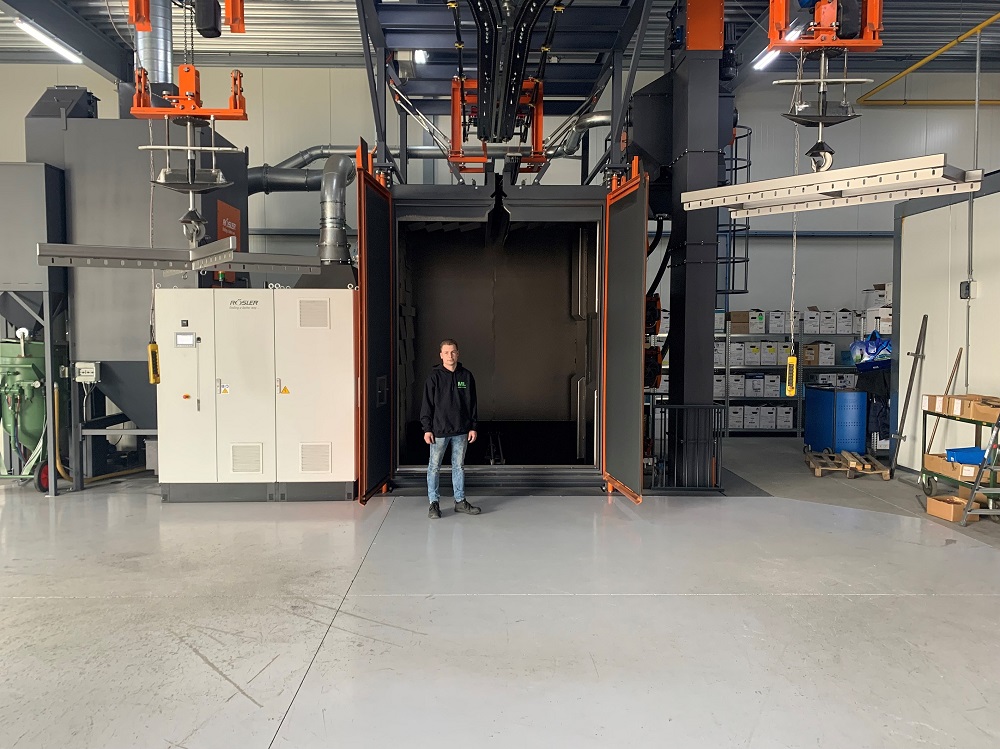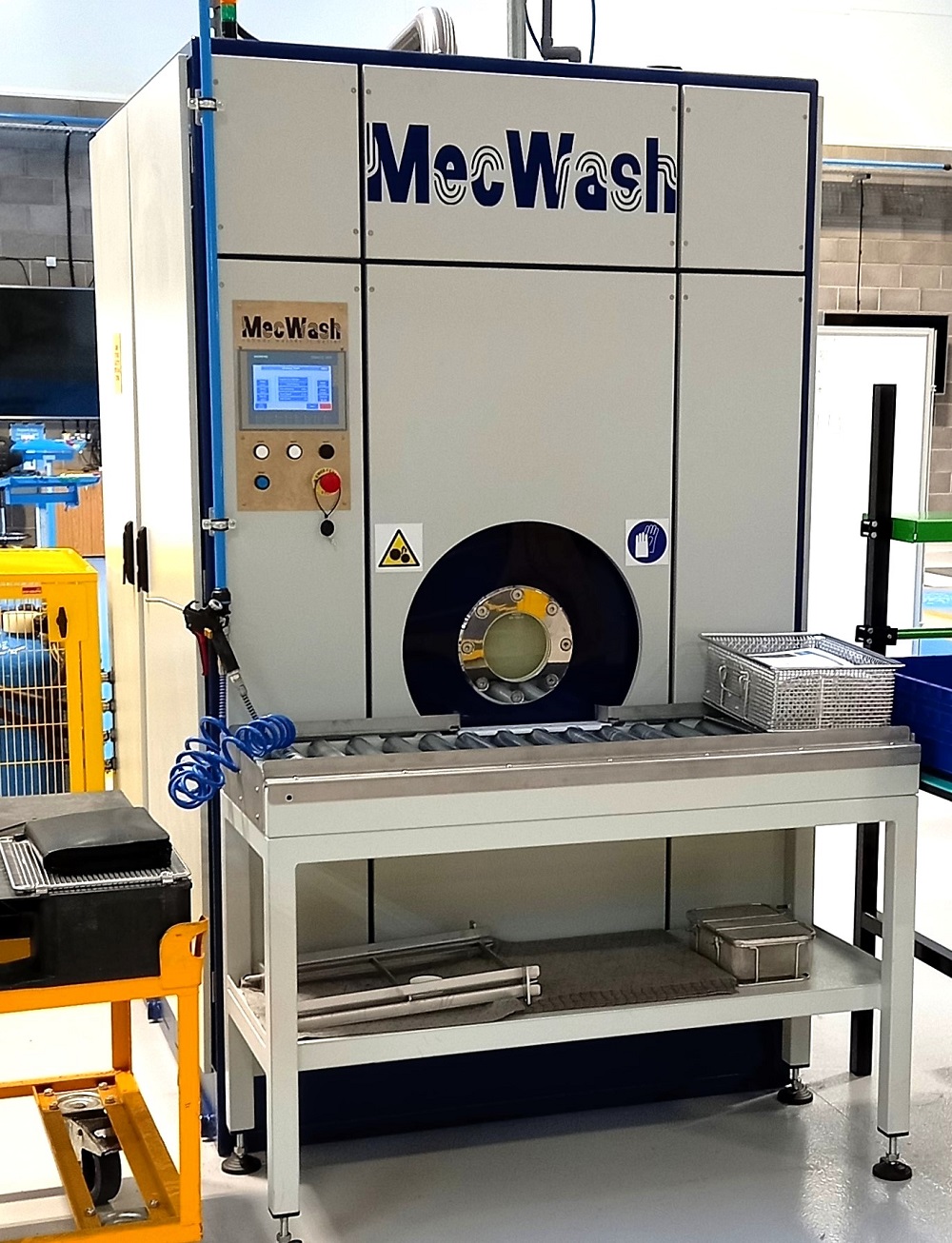When Ottostahl GmbH had to replace an old rotary table shot-blast machine, the company insisted on short cycle times, high energy efficiency and relieving its personnel from strenuous and monotonous physical activities. Rösler and automation specialist Teqram met these challenging demands with the universally deployable Easy Shotblaster RDT 150 rotary table, equipped with a stationary ‘intelligent’ robot. This robot places workpieces on the rotary table in a manner that optimally utilises the entire table area without requiring any ‘teaching’ operations.
Ottostahl in Magdeburg produces up to 30 mm thick, highly precise plasma-cut and up to 300 mm thick flame-cut components. In its shot-blasting department the company is
utilising three machines (two continuous flow roller conveyor machines with an operating width of 3800 mm and a rotary table blast machine). After more than 60 years of use, the company is replacing its old rotary table blast machine with an RDT 150 system from Rösler.
The entire blast system integrates within a manufacturing cell measuring 8 x 8 m, consisting of an intelligent stationary robot and the RDT 150 shot-blast machine.
With its image processing technology, the vision-controlled robot automatically recognises components placed into its working section, completely independent from their position on the pallet. This capability eliminates the normally required time-consuming teaching or programming of the robot. Moreover, with the intuitive interface, no special knowledge is necessary.
After the automatic selection of a suitable gripper from the magazine, the robot picks up components and places them on the rotary table in the optimal position. It provides component data to the machine controls for selecting a suitable processing program. Halfway through the cycle, the robot automatically turns the components to blast the other side. The robot then returns finished workpieces to the pallet.
For further information www.rosler.com






